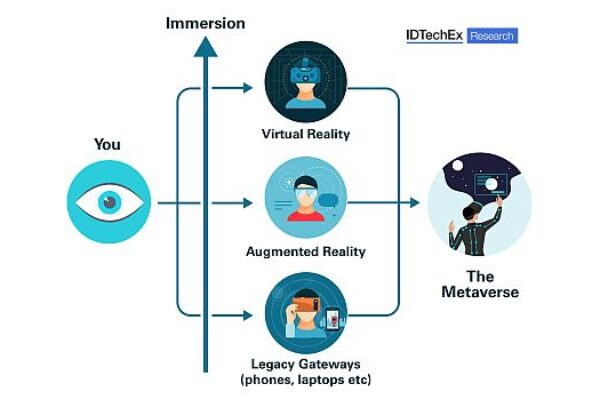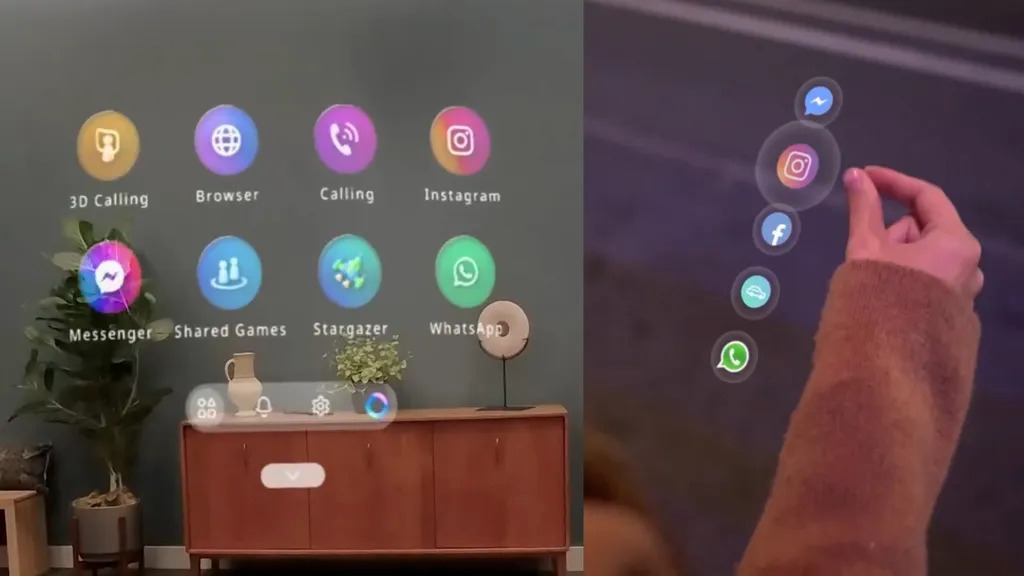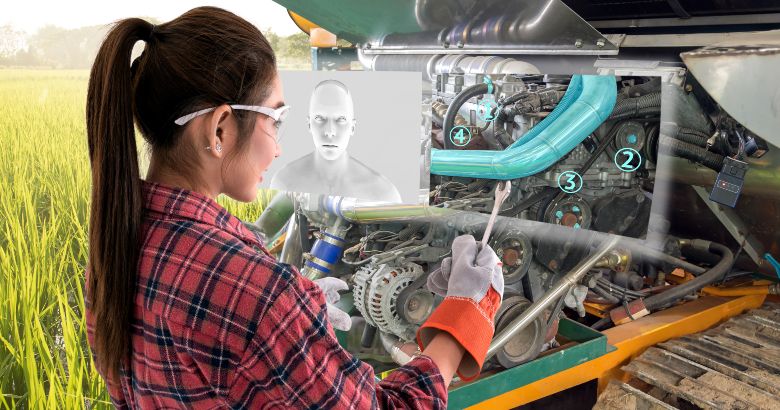Market research firm IDTechEx presents three predictions in augmented and virtual reality for 2023 and beyond. The developments it expects, amongst many others, suggest 2023 will be an exciting year for XR, says the firm.
In 2022 The popularization of the metaverse concept raised massive interest in augmented and virtual reality (AR/VR) devices as the gateway to this future vision of the internet, with excitement gathering over an expected revolution in how users communicate. Arguably “metaverse” became one of the words of the year.
However, many investors cannot clearly explain what the metaverse is and a sharp transition from hype to disillusionment is underway. The vision of an open 3D internet which seamlessly exists alongside the real world and allows participants to take their identities and avatars between different interoperable virtual spaces is poorly understood.
Instead, says the firm, media reports increasingly tend to classify the concept as any 3D open world, which somewhat undersells the idea: calling Roblox or Meta’s Horizon Worlds “the Metaverse” is like calling Google “the Internet.” When considering the development of this next iteration of the internet, it is important to look beyond opinions on any one company and assess the industry’s movement as a whole. 2022 has marked the earliest stages of massive collaboration toward getting the metaverse right.
A Decade of False Starts for Consumer AR to Come to an End
Consumer AR devices have often launched without presenting a use-case compelling enough to justify their high cost and dubious social acceptability. This led to several high-profile flops and headset manufacturers transitioning towards professional markets where success has been more readily available. In 2023, the era of this transition will come to an end, says the firm. This is because greater attention on product-market fit, combined with increasing technological sophistication, is making success for consumer-focused smart glasses a possibility at last.
A trend towards simplicity is evident in the emerging generation of AR headsets aimed at the public. These devices are not yet a viable replacement for the smartphone, so instead of making a complex headset which tries to do everything, why not make something relatively simple targeting a single high-value application?
Reducing front light leakage from optical combiners will be a key challenge for the next generation of AR devices if manufacturers wish to push their unique ability to socialize with physically present people while interacting with computers. Not to mention bringing prices down to an acceptable level for the public.
Aside from a refocus on application-forward approaches, the commercial launch of microLED displays in AR headsets is another key data point suggesting 2023 is the year consumer AR devices could begin to find a niche. These have the ability for highly increased efficiency and brightness. Alongside their potential for extremely low pixel pitches and small panel sizes, these factors help shrink the batteries needed for AR headsets. This leads to a more comfortable wear and a greater shot at producing good-looking designs that promote social acceptability.
Enterprise Use of XR Devices to Grow
Meta’s October 2022 release of the $1500 Quest Pro VR headset raised a lot of hype but also just as many questions, says the firm. This enterprise-focused product represents a growing trend in the VR industry of emphasizing video passthrough mixed reality (MR). This is where images from cameras on the front of the headset intermesh with virtual objects. “Pancake” lenses, which use polarizers to shrink the optical path through the headset, help keep the headset compact and prevent video passthrough from feeling like users’ eyes are on stalks.
Meta wants this headset to transform a laptop into a multi-monitor setup that users can take anywhere, and its capabilities are impressive. The volume of conversations around the device conceals the wider emphasis on XR devices intended to fulfill similar applications.
Despite growing interest in XR devices in the office, hardware barriers remain preventing headsets from becoming the workstation of choice. One such issue is the vergence-accommodation conflict. This is the mismatch between perceived distance and focal distance for virtual objects in a stereoscopic 3D display like a VR headset. This is one contributor to the eyestrain and motion sickness-like symptoms many experience when using VR, which is particularly important to solve if one wants to use a headset for hours at a time.
For VR headsets, a solution of interest is geometric phase lenses, which use carefully subwavelength patterned designs in conjunction with switchable half waveplates (effectively large liquid crystal pixels) to produce a variable focal length lens with no moving parts based on switching the polarization state of light. Couple this with eye-tracking tech to work out where the user is looking, and these optical devices can be used to solve the vergence-accommodation conflict, matching perceived and actual focal distances. Meta publicly demonstrated a prototype lens for this purpose this year. While it will not find its way into headsets in 2023, look again in 2027 and deployment will likely be underway.
Overall, enterprise adoption of XR headsets is expected to keep growing next year, with an emerging wave of VR headsets emphasizing video passthrough AR being key drivers in this trend. However, do not expect them to be a replacement for the laptop.
Collaboration Between Major Metaverse Movers Will Increase
The most notable feature of the Quest Pro’s announcement was the collaboration between Meta and Microsoft to bring the latter’s productivity features onto the device. On the one hand, says the firm, this forms another data point amongst many this year (including the loss of important personnel like HoloLens lead engineer Alex Kipman), suggesting that Microsoft is revaluating its HoloLens AR device program. On the other, it speaks to the true “unite or die” problem of creating an interoperable metaverse and is an early datapoint suggesting a growing trend in collaboration between major stakeholders.
2022 marked the formation of the Metaverse Standards Forum, which aims to advise international standards agencies on developing standards to support an open metaverse. Its members read like a who’s-who of the XR industry, as well as major internet, telecoms, and professional service firms. 2023 will almost certainly see the first implementation of conclusions from the group in shaping this nascent space.
Although Apple is a notable omission to the Forum’s list of members, ByteDance not appearing is possibly more interesting. The force behind major social media disruptor TikTok bought VR headset manufacturer Pico in August 2021 and, in late 2022, began targeting European consumers with its Pico 4 headset. This is an enterprise-focused headset that appears to be designed to compete directly with the Quest Pro due for release soon. Although yet to launch in the US market, this move, amongst others including the acquisition of several companies with metaverse interests, suggests this internet giant could be one to watch in the XR space in 2023.
Despite the impact of general global uncertainty and some loss of confidence in the metaverse, says the firm, the data suggests that the future looks bright for XR. The hardware development mountain that prevents its full realization is slowly being climbed, with VR headsets becoming increasingly commonplace in the home and lightweight, good-looking AR glasses set to replace the smartphone.
Quelle:



